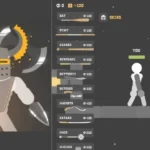Introduction to ns3 and Chord Implementation
Welcome to the exciting world of ns3 and its Chord implementation! If you’re venturing into network simulations, you’ve likely heard about ns3. This powerful tool offers versatility that can elevate your research or projects. But what truly sets it apart is its ability to incorporate protocols like Chord.
Imagine creating a distributed hash table (DHT) with efficiency while simulating real-world scenarios. With ns3’s robust framework, you’re not just observing; you’re experimenting, innovating, and discovering new possibilities in networking.
Whether you’re a seasoned developer or just getting started with network simulations, understanding how to implement Chord in ns3 opens up numerous doors for exploration and creativity. Ready to dive deeper? Let’s embark on this comprehensive journey into ns3 chord implementation together!
ALSO READ: Mastering ‘site google.com calayahblake’: Search Guide
Understanding the Basics of ns3 and Chord
ns3 is a versatile network simulator designed for research and educational purposes. It offers an open-source platform that allows users to create complex network scenarios. This flexibility makes ns3 ideal for simulating various communication protocols.
Chord, on the other hand, is a distributed hash table (DHT) protocol used in peer-to-peer networks. Its primary function is to efficiently locate nodes and resources in large-scale environments. Chord employs consistent hashing, ensuring balanced load distribution among peers.
Together, ns3 and Chord facilitate effective simulation of decentralized systems. Researchers can model how data flows within networks while evaluating performance metrics like latency and fault tolerance.
Understanding these foundational concepts sets the stage for deeper exploration into their integration within simulations, paving the way for innovative applications in networking research.
Benefits of Using Chord in ns3 Simulations
Using Chord in ns3 simulations offers several significant advantages. First, it enhances the efficiency of peer-to-peer networks. The Chord protocol provides a scalable solution for resource location and management.
Another key benefit is its robustness against node failures. This characteristic allows networks to maintain stability even when nodes go offline unexpectedly.
Moreover, Chord’s logarithmic search time enables faster data retrieval compared to other methods. This speed can be crucial for applications requiring real-time data access.
Implementing Chord also promotes flexibility in network design. Researchers can easily modify parameters to test different scenarios without extensive code changes.
Integrating Chord with ns3 facilitates comprehensive performance evaluations. Users gain insights into both theoretical and practical aspects of distributed systems through detailed simulation metrics.
Step-by-Step Guide to Implementing Chord in ns3
Begin by setting up your ns3 environment. Download the latest version from the official site and follow installation guidelines to ensure everything is running smoothly.
Next, familiarize yourself with the Chord protocol. Understand its architecture, including key features like node identifiers and finger tables. This knowledge will make implementation easier.
Create a new project folder in ns3 for your Chord simulation. Within this folder, develop a script that initializes nodes using `NodeContainer`.
Implement the chord algorithm by defining functions for joining, leaving, and querying nodes within your network. Pay attention to how nodes manage their routing tables as they connect with others.
Test each function individually before scaling up to multiple nodes. Gradually increase complexity while monitoring performance metrics through built-in logging tools available in ns3.
Visualize results using appropriate graphing libraries or tools integrated into your workflow for clearer insights into the behavior of your simulated network.
ALSO READ: What is jablw.rv? Understanding Its Origins and Future
Tips and Tricks for Successful Implementation
When diving into ns3 chord implementation, start with a solid understanding of both ns3 and the Chord protocol. Familiarize yourself with their individual components to ensure smoother integration.
Use modular coding practices. Break down your implementation into manageable sections. This approach makes debugging easier and enhances code clarity.
Always test each module thoroughly before moving on to the next one. Small errors can lead to significant issues later in the process, so verify functionality frequently.
Utilize the extensive ns3 documentation and community forums for support. Engaging with other users can provide insights that enhance your project’s success.
Stay organized by maintaining clear comments within your code. It’ll save you time when revisiting parts of your work or collaborating with others.
Remember to keep backups of different stages of development. This habit protects against potential data loss during experimentation or unforeseen complications.
Case Studies and Real-World Applications of ns3 Chord Implementation
Numerous case studies highlight the effectiveness of ns3 chord implementation in real-world scenarios. Researchers have utilized this framework to analyze peer-to-peer networks, showcasing its adaptability and robustness.
One notable application is in distributed file sharing systems. Here, ns3’s Chord protocol allowed for efficient data retrieval among peers, drastically reducing latency. This study demonstrated how dynamic node participation can enhance network resilience.
Another example involves simulating large-scale sensor networks. By integrating Chord with ns3, researchers achieved reliable data aggregation from multiple sensor nodes spread over vast areas. The results indicated improved energy efficiency and communication reliability.
Additionally, some academic projects explored smart grid management using ns3’s Chord implementation. These initiatives illustrated potential optimizations for power distribution through decentralized control mechanisms.
Such diverse applications reveal the versatility of ns3 Chord implementation across various fields, paving the way for further innovations and enhancements in networking technology.
Potential Challenges and How to Overcome Them
Implementing ns3 Chord can come with its own set of challenges. One common issue is the complexity of network configurations. Users often face difficulties in setting up parameters correctly, leading to inaccurate simulations.
Another challenge lies in understanding the underlying algorithms used by Chord. The intricacies of distributed hash tables may confuse newcomers and hinder effective implementation.
To overcome these hurdles, thorough documentation and tutorials are essential resources. Engaging with community forums can also provide valuable insights from experienced users who have tackled similar issues.
Testing incrementally is a smart approach as well. By implementing small components first, you can identify problems early on without overwhelming yourself with too many variables at once.
Don’t hesitate to seek help when needed. Collaboration often leads to innovative solutions that enhance your understanding and improve project outcomes.
Conclusion
ns3 is a powerful tool for simulating network protocols, and its integration with Chord opens up new avenues for research and development. Whether you’re exploring decentralized systems or looking to improve your understanding of peer-to-peer networks, ns3’s Chord implementation offers valuable insights.
Through this guide, you’ve learned the fundamentals of both ns3 and Chord, as well as how they work together seamlessly. The benefits are clear: enhanced simulation capabilities, realistic modeling scenarios, and an enriching learning experience.
The step-by-step process outlined can help you implement Chord effectively in your projects while overcoming challenges along the way. By applying tips from real-world case studies, you can navigate potential pitfalls smoother than ever before.
As you embark on your journey with ns3 chord implementation, remember that practice makes perfect. Embrace experimentation and continually seek to refine your approach for even greater success in your simulations. Happy coding!
ALSO READ: 935358726: Key to Secure Transactions and Identification
FAQs
What is “ns3 Chord implementation”?
ns3 Chord implementation is the integration of the Chord protocol into the ns3 network simulator. It allows researchers and developers to simulate decentralized peer-to-peer networks using a distributed hash table (DHT) for efficient data location and management.
How does Chord enhance scalability in ns3 simulations?
Chord enhances scalability by ensuring that the network can efficiently handle a large number of nodes. Its use of consistent hashing helps distribute data across the network, allowing for balanced load and faster access even as the network grows.
What are the key benefits of using Chord in ns3 simulations?
The key benefits include enhanced scalability, fault tolerance, efficient data retrieval with logarithmic search time, and flexibility in designing network simulations with various scenarios and configurations.
What are common challenges when implementing Chord in ns3?
Common challenges include setting up complex network configurations and understanding the intricacies of distributed hash tables. To overcome these, detailed documentation, incremental testing, and engaging with the ns3 community are recommended.
How can Chord be applied in real-world scenarios using ns3?
Chord can be applied in distributed file sharing systems, large-scale sensor networks, and even smart grid management. By simulating these systems with ns3, researchers can study improvements in data retrieval efficiency, energy usage, and overall system performance.











